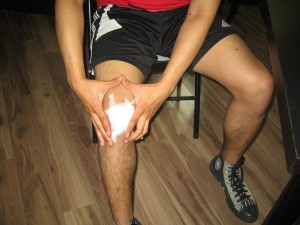Overview
Proper first aid for bleeding issues that are internal and external is very critical due to the fact that it limits blood loss until emergency help is able to arrive. These types of actions include the following:
*Applying direct pressure to the affected area

*Maintaining pressure using bandages and pads
*Raising the injured area above the heart if you’re able to
Minor Bleeding
You can manage smaller-sized bleeding and cuts in the comfort of your own home. Suggestions for this include the following:
*Clean the affected area with sterile gauze that has been soaked in either clean water or a saline solution. Never use any cotton wool or other material that will leave anything in the wound itself.
*Apply a dressing that is more appropriate that can be held in place with hypoallergenic tape, such as a band-aid or a non-adhesive dressing that can be regularly changed.
*If you’re unable to take care of the wound yourself, contact your doctor.
*If you’re in need of a booster, especially if you haven’t had one of these in the last five years, contact your doctor for this as well.
Nosebleeds
Typically, this is something that isn’t very severe in nature. General first aid suggestions for this include the following:
*Sit upright and tilt your head forward
*Squeeze your nostrils shut using your thumb and forefinger, holding them for approximately ten minutes
*Release the hold and check to see if the bleeding has stopped. If it has, avoid blowing and picking your nose for the remainder of the day.
*If bleeding continues for 20 minutes or the nosebleed occurs again, contact your doctor immediately
External Bleeding That is Severe
Injuries that are small can even result in a severe amount of bleeding depending on where the injury has actually occurred. This is something that can lead to shock, which can be life-threatening.
General first aid suggestions to help treat this issue include the following:
*Check for any danger before getting near an injured person, ensuring that you are wearing protective gloves
*Ask someone else, if available, to call 911 for medical assistance
*Lay the victim down and raise any injured areas above the heart if you’re able to
*Make the individual apply direct pressure to the wound in order to stem blood flow. If they aren’t able to do this, then apply pressure yourself.
*If necessary, pull the edges of a wound together before applying a dressing or bandage and firmly securing it
*Don’t remove any embedded objects, but apply pressure around them
*Never apply tourniquets
*Don’t remove any dressings that become saturated with blood. Instead, apply fresh ones over the top and secure it with a bandage.
